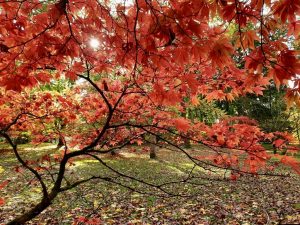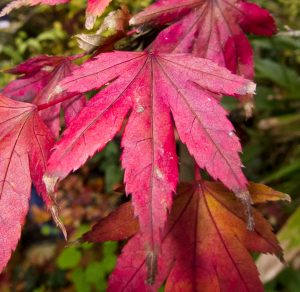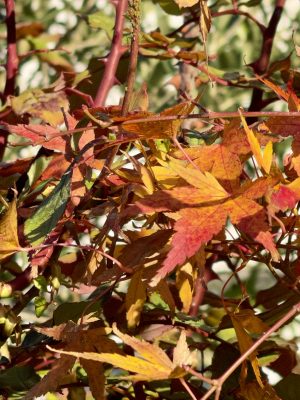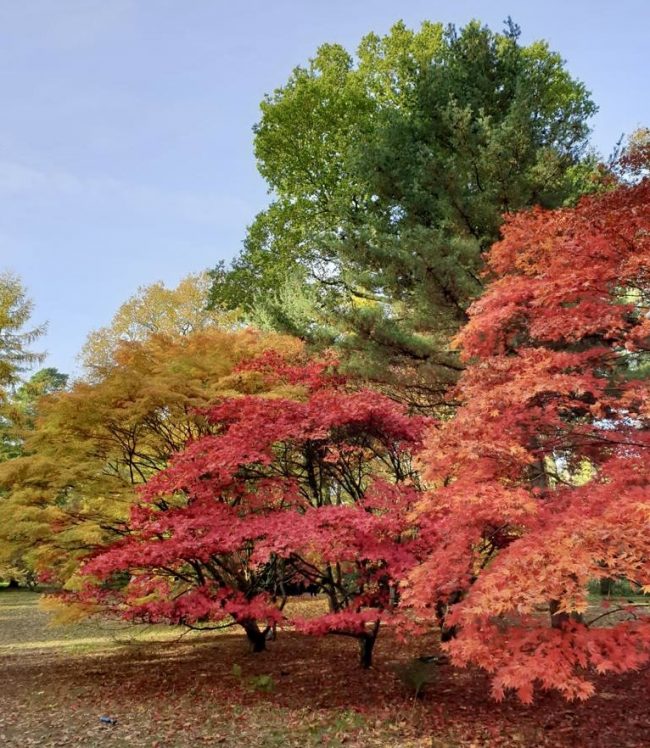Thomas Meehan : American autumnal colours

The changing colours of the leaves in autumn is a phenomenon that affects the vast majority of deciduous trees (and some conifers, eg. Larch). The leaves change from green to various shades of yellow, brown, orange, red and even purple. The nature of these changes has been the topic of a previous blog. What is interesting is that this colour change is particularly marked in the trees of the North Eastern region of the United States. Indeed, bulletins are published listing the best places to see the myriad of colours that the trees display. This difference in the colours of American and European trees was commented upon by Thomas Meehan, back in the nineteenth century.
Meehan first worked as a gardener at Kew but later moved to Philadelphia (where he is credited with saving Bartram’s Garden). His botanical studies led to him being the editor of The Gardener’s Monthly, writing articles for various newspapers and authoring 'The Native Flowers and Ferns of the United States'. In 1881, Meehan noted in a paper presented to the Proceedings of the Academy of Natural Sciences of Philadelphia, (Vol 33) that the intensity and variety of autumnal colours was much greater in the States than in Europe.
and authoring 'The Native Flowers and Ferns of the United States'. In 1881, Meehan noted in a paper presented to the Proceedings of the Academy of Natural Sciences of Philadelphia, (Vol 33) that the intensity and variety of autumnal colours was much greater in the States than in Europe.

He suggested that the difference might be due to the “American light” and that European trees might (after many generations) adapt to this light and then show similar colours. Recently, Renner and Zohner* have investigated this difference. Their paper(s) offer a number of observations / findings:
- American trees start to break down their chlorophyll earlier in autumn than European trees, so the period in which the leaves operate as photosynthetic 'factories' is shorter. The earlier onset of senescence means they are at greater risk of light mediated damage in the bright days of early autumn (particularly if coupled with cold nights).
- Trees growing at a particular latitude in Eastern North America receive significantly more light than trees growing at the same latitude in Europe.
- North American trees react differently to the shorter days of autumn that European trees - when grown in the same area / garden.
 A greater percentage of North American trees produce anthocyanins - which give the red and purple colours.
A greater percentage of North American trees produce anthocyanins - which give the red and purple colours.- Anthocyanins absorb light over a wide range of wavelengths. They act as a sunscreen, protecting the leaves at a time when they are undergoing rapid and complex changes that allow them to export valuable nutrients / resources to other regions.
It would seem that Meehan’s comments about the ‘American light’ were remarkably prescient some 140 years ago.
Renner and Zohner’s detailed papers are available here :
- https://nph.onlinelibrary.wiley.com/doi/epdf/10.1111/nph.15900
- https://www.research-collection.ethz.ch/bitstream/handle/20.500.11850/416178/nph.16594.pdf?sequence=3&isAllowed=y

Thanks to Oliver for this photo of autumn colour at Westonbirt
Comments are closed for this post.
